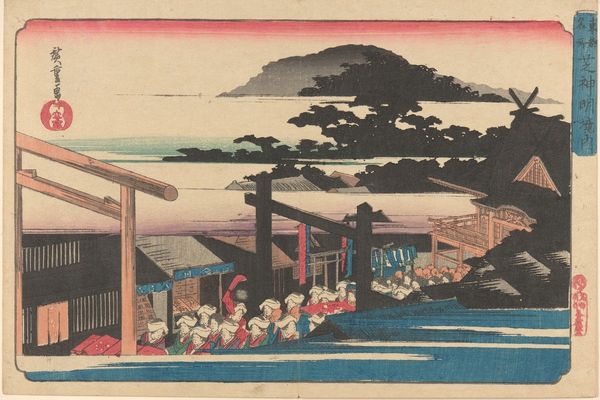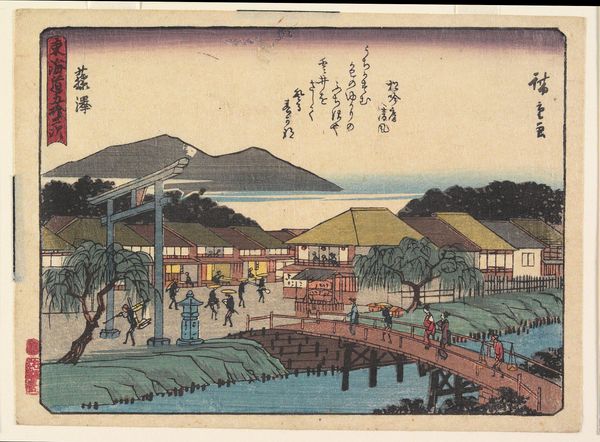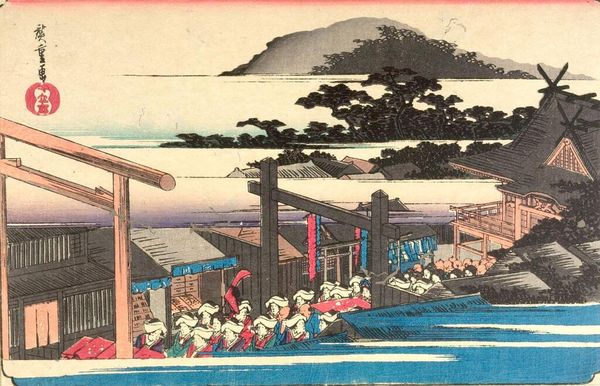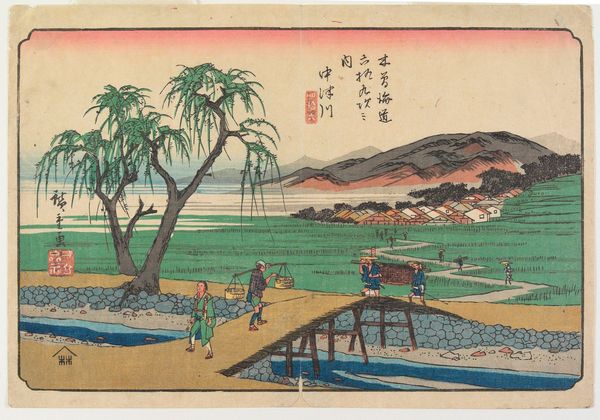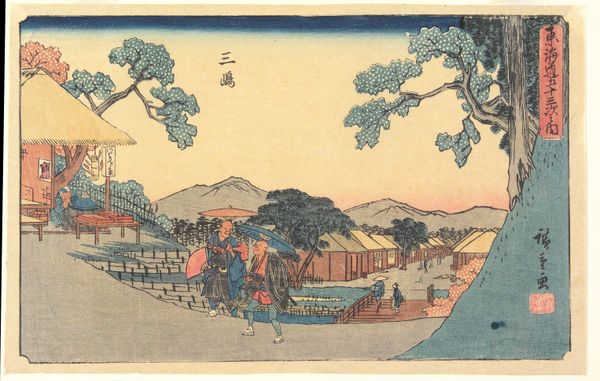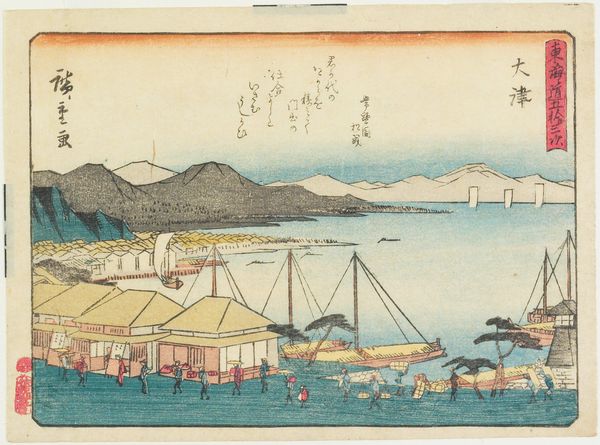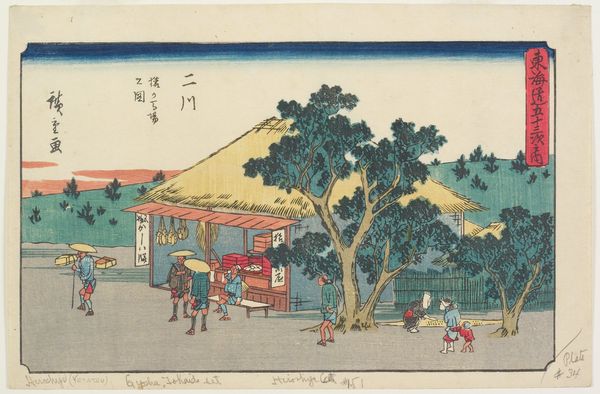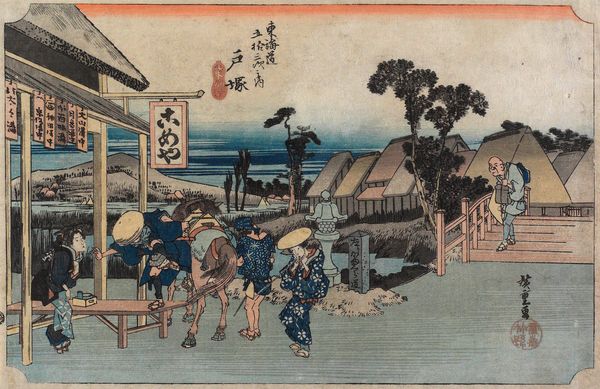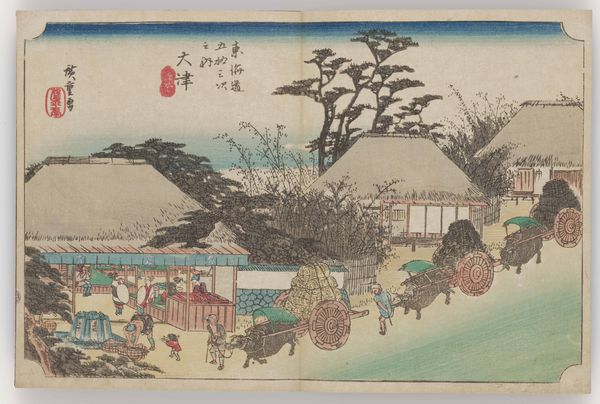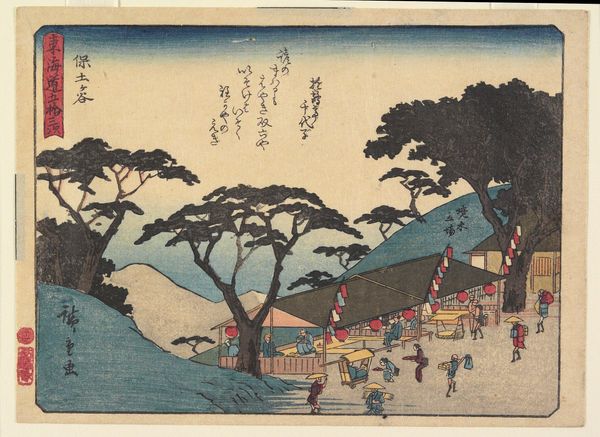
Precincts of the Shiba Shinmei Shrine c. 1832 - 1838
0:00
0:00
print, ink
# print
#
asian-art
#
landscape
#
ukiyo-e
#
ink
Dimensions: 8 3/4 × 13 9/16 in. (22.2 × 34.4 cm) (image, horizontal ōban)
Copyright: Public Domain
Editor: Here we have Utagawa Hiroshige's "Precincts of the Shiba Shinmei Shrine," created sometime between 1832 and 1838. It’s a print made with ink. I’m struck by how the composition draws my eye from the bustling foreground toward the tranquil landscape in the distance. How do you interpret this work, especially within its historical context? Curator: This print offers a powerful glimpse into Edo period Japan, a time of relative peace but also rigid social hierarchies. Look at how Hiroshige frames the common folk within the precinct. They appear almost as a collective, their individuality somewhat diminished by the repetitive patterns of their clothing and movements. How do you think this representation speaks to their position within the broader social structure of the time? Editor: I hadn't considered that. It does seem to emphasize the group over the individual. Could this also be read as a reflection of the economic realities of the time, where communal effort was essential for survival, especially for the merchant and artisan classes who frequented such spaces? Curator: Precisely. The shrine itself, looming in the background, represents both spiritual solace and a center of communal activity. Temples at the time operated like banks, employment offices and community centers. Further, consider the use of perspective. Notice the Western influence of foreshortening, but adapted to serve a distinctly Japanese aesthetic. It prompts questions about cultural exchange and adaptation, and about how societies grapple with tradition in the face of external forces. Editor: It's amazing how much social and political commentary can be embedded in what seems like a simple landscape print. I’ll definitely be paying more attention to the social context moving forward. Curator: Exactly. Art becomes a powerful lens through which we can examine history, identity, and power dynamics. I’m so glad you see how meaningful contextual analysis can be!
Comments
No comments
Be the first to comment and join the conversation on the ultimate creative platform.
